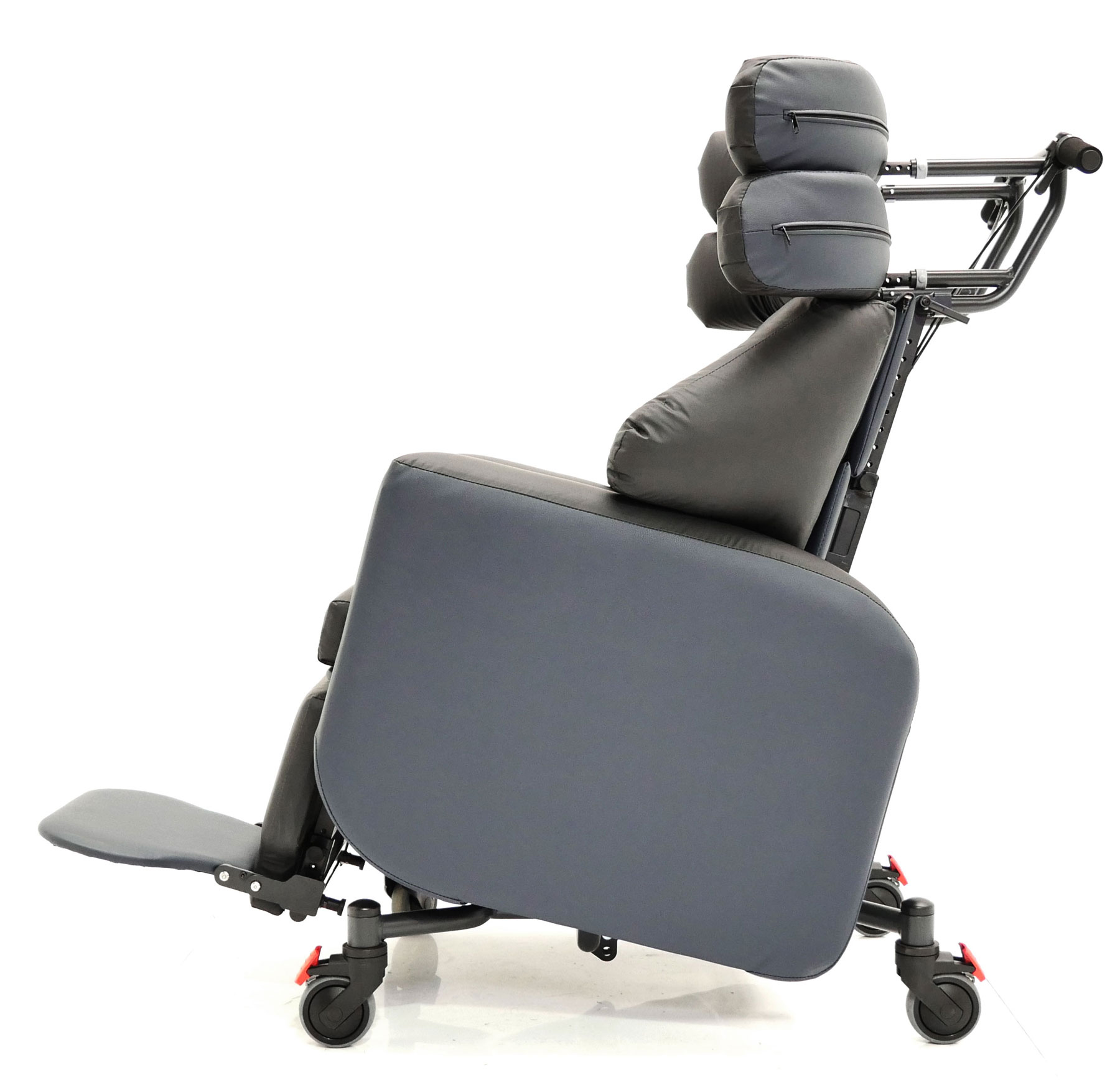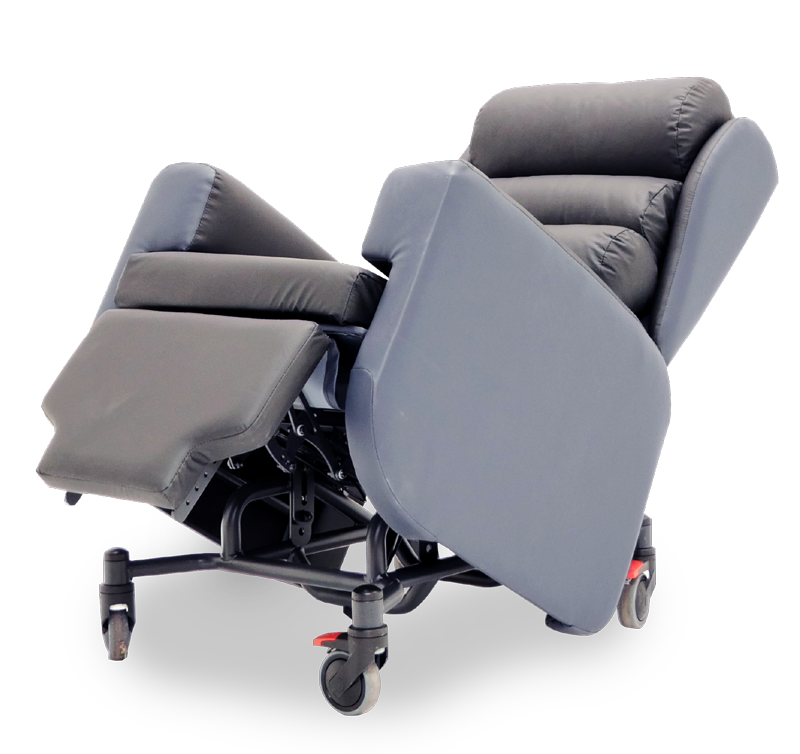Benefits of the Tri-Chair
for care settings
Improved posture and pressure management for residents through use of the Tri-Chair can reduce staff workload and improve the quality of time available for carers to spend with residents. For those occupants seated in a Tri-Chair will experience more comfort and therefore less need for interventions such a frequent turning in bed to reduce pressure build up.
Integration of the Tri-Chair into care settings reduces the need for manual handling by carers thereby improving safety and dignity of the user and indeed, making manual handling and transfers simpler and more effective. It is often difficult to get up as a result of reduced muscular strength and impaired functioning of the joints. Having the right chair can assist with all types of transfers and often reduces the dependency on transfers thereby helping with care routines and patient dignity.


The Tri-Chair One helps to facilitate assisted transfers as the occupant, who has the correct seat height, can safely place their feet firmly on the floor contributing positively to the sit-to-stand movement. Alternatively, the Tri-Chair has removeable arms thereby aiding side transfers, making transferring into a wheelchair via a sideboard or bed via a slide sheet easier. For the less able, the Tri-Chair’s tilt-in-space facility allows easier and more accurate pelvic positioning by simply having the chair in a backward tilt when moving the occupant into the chair which can be useful when using mobile hoists/ceiling track hoists.
Falls can be a regular occurrence for those with low mobility and impaired strength or as a result of medication or cognitive impairment. The Tri-Chair can keep these individuals safer, more secure and at lower risk from falling. Tailoring the Tri-Chair particularly to an individual’s height, leg length and clinical need will reduce risk of falling or slumping and ensure that the chair comfortably accommodates the individual. Key Tri-Chair functions that help to reduce falls and sliding from a chair include tilt-in-space facility, back recline, seat depth adjustment, and the adjustable footrest.
Further benefits to a care setting by incorporating Tri-Chairs into the care package for residents is that effective management of both posture and pressure can contribute positively to the rehabilitation of users, where feasible. The Tri-Chair can also assist in improving the quality of life for those with poor balance and proprioception, those that have a tendency to lean or drop their head or slide forward in their chair or have complex postures or for someone who previously has been bedbound 24/7. By enabling an individual to be seated out of bed, to interact as part of communal settings whilst their posture is correctly managed in turn leads to improvements with breathing, digestion, circulation, eating and swallowing and achieving quality rest and relaxation which has a positive effective on resident and staff alike.
From a practical perspective the Tri-Chair is simple to maintain, easy to clean and adjust to accommodate an individual’s changing needs. Similarly, the chair is highly mobile with directional lock castors, ensuring staff do not experience the “shopping trolley” effect when moving residents, the Tri-Chair glides whether occupied or unoccupied.
Tri-Chairs are more than just good sitting!

